Skytree / Tokyo
Tower power
The new Tokyo Skytree, the world’s tallest freestanding tower, isn’t just about height. It’s a monument to the Japanese precision and care taken over its every detail.
On a clear day, from the highest observation point inside the new Tokyo Skytree – rising 451.2m above street level – you can see the curvature of the earth. With the view of building tops stretching to the horizon, it’s easy to overlook what’s immediately underfoot: the cutting-edge Japanese manufacturing skill that went into completing the world’s second-tallest manmade structure.
Building and planning for the 634m tower took more than seven years. Sculptor Kiichi Sumikawa joined in 2006, while the project was in the planning stage, and he later teamed up with renowned architect Tadao Ando on a model for the tower’s design. His role brought him face-to-face with the architects and engineers who were attempting to build a technological and engineering marvel. “This is a monument of Japanese manufacturing ingenuity,” says Sumikawa. “It wasn’t just big companies. There were neighbourhood factories that had expertise in making a special component for, say, an elevator, and they were the only ones who could make it.” Nobody in Japan had ever worked on a construction project of this scale. Built on an old train yard owned by Tobu Railway, the Skytree replaces Tokyo Tower, which had been the capital’s tallest structure and main relay for tv and radio broadcasts for the past half century. Compared to Tokyo Tower, Skytree stands nearly twice as tall.
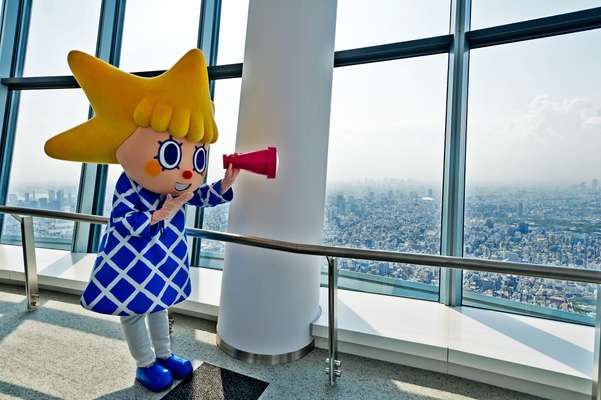
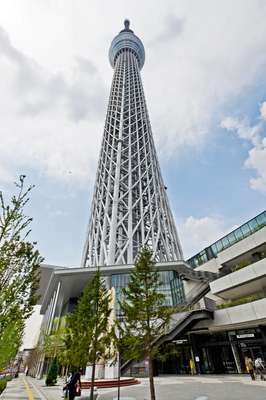
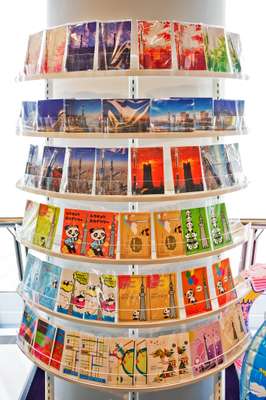

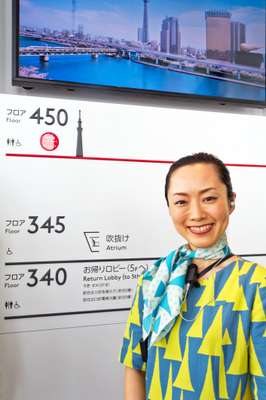
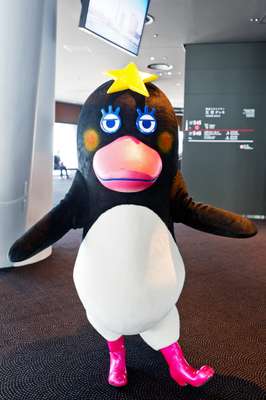
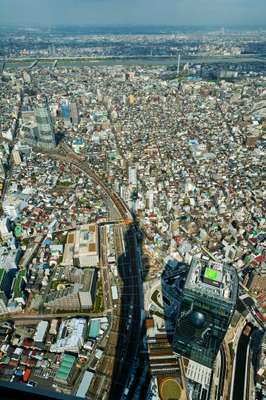
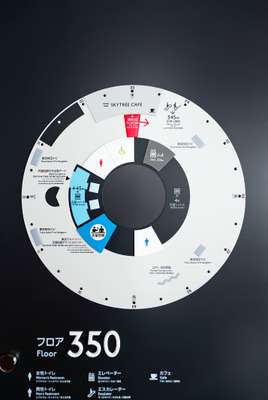

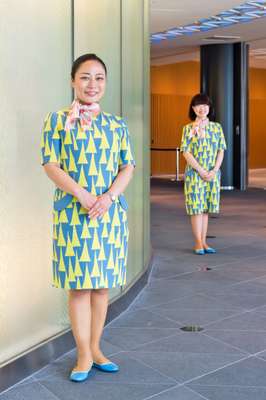
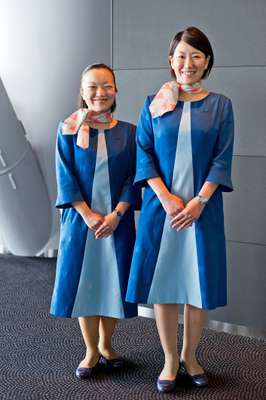
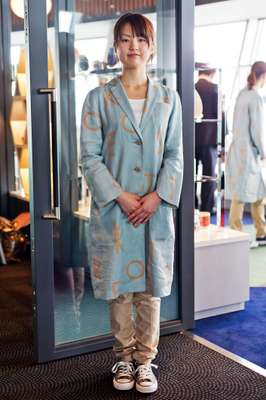
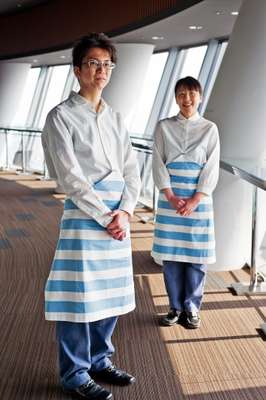

The Skytree’s unprecedented height didn’t pose the only challenge. Imagine trying to put up a tower in one of the world’s most crowded cities. Engineers and architects from building firm Obayashi and architects Nikken Sekkei – two of Japan’s construction industry giants – took their time and considered every detail. Where would the 37,000 steel pieces of the tower’s frame be kept during construction? How would they prevent objects from falling and keep working crews safe at such heights? How would they prevent snow buildup on the observation deck’s roof? What colour should the tower be?
The construction team had to be sure that the tower wouldn’t topple in a typhoon or massive earthquake. They sent up weather balloons to measure wind speeds and used sophisticated computer-simulation software. At Sumikawa’s suggestion, they borrowed design elements from Japan’s 1,400-year-old five-tiered wooden pagodas. The preparations paid off when the magnitude 9 quake that struck off Japan’s Pacific coast in March last year shook the nearly finished tower but caused no damage.
For the builders, coming up with a precise production and parts-delivery schedule was key to sticking to their strict timeline. To orchestrate everything, they relied on one of Japan’s most widely adopted manufacturing innovations: the ultra-efficient just-in-time production system popularised by Toyota’s carmaking plants. Like clockwork, trucks arrived at the building site carrying only the parts that were to be immediately hoisted into place by the giant cranes overhead, making vast storage facilities unnecessary.
Dozens of factories around the country and an army of welders were mobilised for the cause. High-tech conglomerate Hitachi produced the elevators and antenna spire while ykk ap built a serpentine glass-encased walkway for the upper observatory deck. Tobu Energy Management worked with Mitsubishi Heavy Industries on a seven million-litre water tank that acts as an eco-friendly heating and cooling system and can be tapped during disasters. jfe Steel supplied much of the structure’s steel tripod base. Some technologies were new – for instance, the led units that illuminate the tower at night. Panasonic’s labs raced to develop the units and test their resilience under harsh weather conditions. “It was an unbelievably high hurdle,” says Tetsuo Watanabe, an executive in Panasonic’s lighting division.
The country’s small and medium-sized speciality firms played a crucial role as well. jfe Steel, the world’s fifth-largest steel maker, didn’t have the heavy-duty hydraulic-powered metal presses to turn planks into 2m-wide steel tubes. So it called Tomita Seisakusho, a company in Matsudo city led by Osamu Tomita. The 52-year-old, who is the third generation in his family at the helm, devoted his 170-person staff and two factories to the project. Hardlock Industry, a 50-person firm in Higashi Osaka, supplied giant nuts that can’t be loosened once they’re screwed onto bolts. And Tomoe, a Tokyo-based bridge and tower builder, assigned 230 employees – two-thirds of its staff – to the job of cutting and welding together the steel skeleton. “Japanese companies should be proud of what they were able to accomplish. It was a team effort,” says Sumikawa.
Uniforms: height of fashion
The Japanese attention-to-detail running through the design and construction of the tower also extends to the uniforms worn by the staff working at the Skytree. The man responsible for the project’s sartorial image is Akira Minagawa, a Tokyo-based designer whose label, Minä Perhonen, is admired for its original textiles. “I knew it was a really big project,” he says, “not just commercially, but as a symbol of Tokyo and of Japan.”
Minagawa was asked to come up with uniforms in 10 categories, from the front desk receptionists and tower guides to the café staff and cleaners. He worked with textile factories in Tokyo and Saitama. “I think Japanese textiles are some of the best in the world and I wanted to show that.” The tower appears in different guises – as a pattern on the dress for the guides and in the pointy hat (made in collaboration with Tokyo company Hat) worn by the information desk staff. The female guides are in hard-wearing cotton jacquard, the information staff in wool, the male guides are in a jaunty cotton printed shirt and scarf and the shop staff in linen overcoats. The cleaners are in a stylish, printed green cotton with a matching hat. The colour palette was inspired by the ‘Sky’ and ‘Tree’ of the structure’s name.
“I didn’t want to create something futuristic,” he says. “I wanted something warm and modern but also faintly nostalgic, maybe a shape that our mothers might have worn.” Minagawa’s commitment to working with Japanese manufacturers extended to the T-shirts he designed for the Skytree shop. Each one comes with a sheet of photos of the local factory where the T-shirts were made. “Tokyo has become a city of consumption,” he says. “But it used to be a city of manufacturing – I’d like to revitalise that tradition.”


